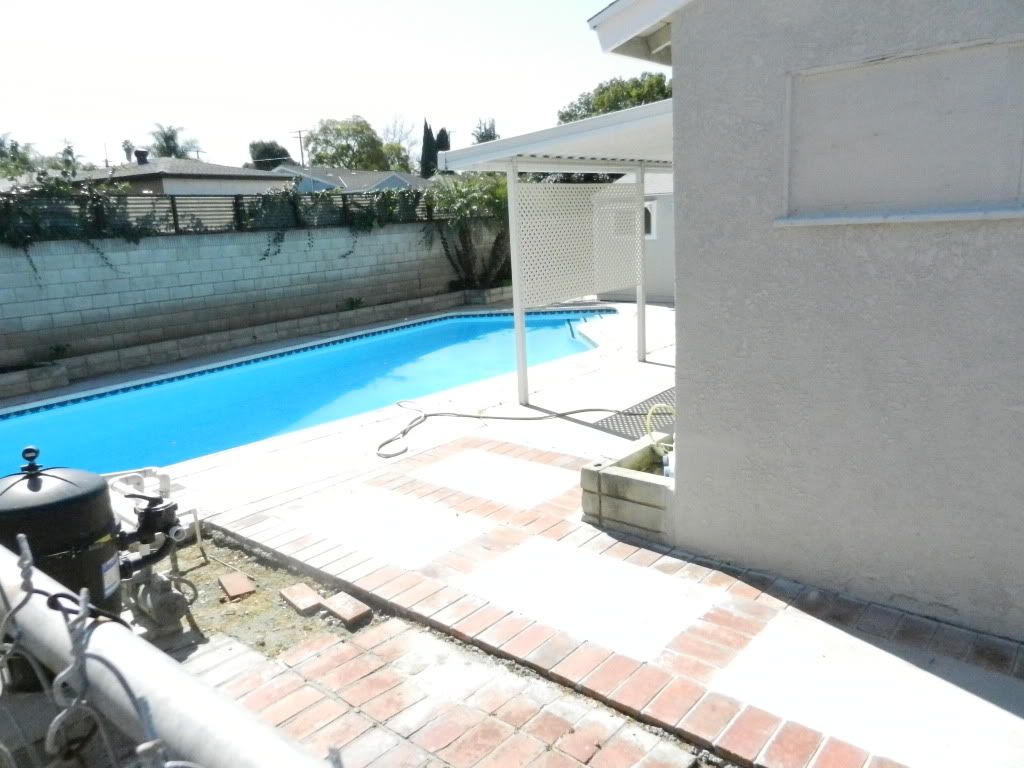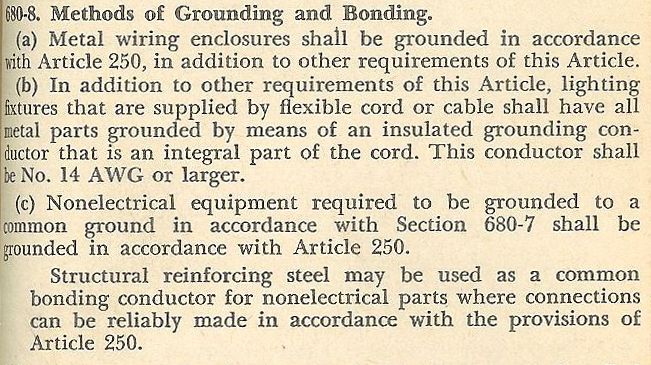ICE
Oh Well
There is an expired pool permit dated 1968. Now a bank owns the property and has taken out a new permit to legalize and final the expired permit. Some in my office have suggested that I am required to follow the 1968 code. It was further suggested that I should require a report from a pool service company that states that everything is safe as it is. I don't agree and will apply the current code. This may be problematic in that the 1968 code probably didn't include the requirement for an equipotential bonding grid.
The place was locked up when I got there and all I could do was look over the fence. There is a bootleg aluminum patio cover and a bootleg building (with electrical power) on the right. I wrote a correction to obtain a building permit for the patio cover and building. I also requested an electrical permit and noted that there will be strict adherence to article 680. Of course, a licensed electrical contractor shall be required. My guess is that the patio cover and out-building will go away as soon as the bank learns of the cost involved.

The place was locked up when I got there and all I could do was look over the fence. There is a bootleg aluminum patio cover and a bootleg building (with electrical power) on the right. I wrote a correction to obtain a building permit for the patio cover and building. I also requested an electrical permit and noted that there will be strict adherence to article 680. Of course, a licensed electrical contractor shall be required. My guess is that the patio cover and out-building will go away as soon as the bank learns of the cost involved.

Last edited by a moderator:

